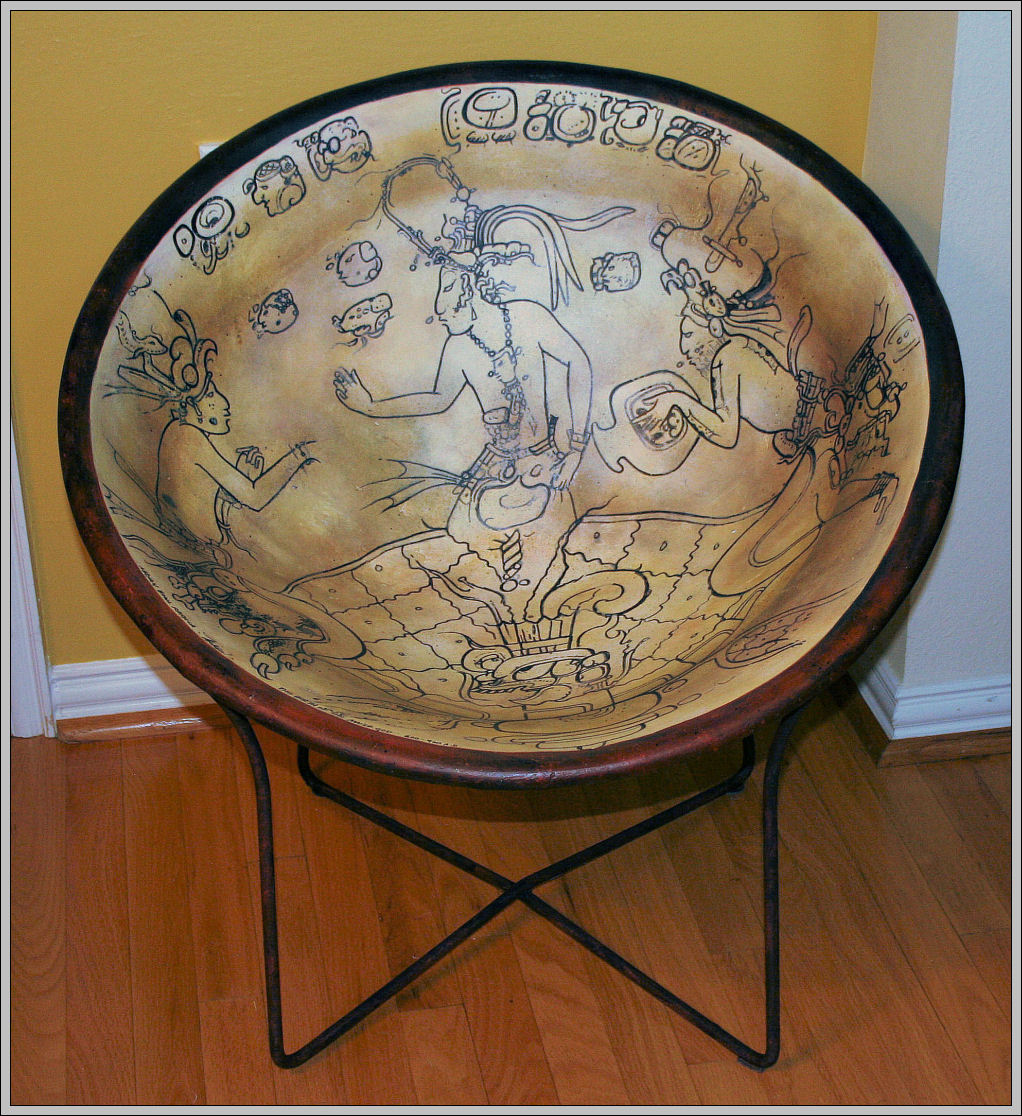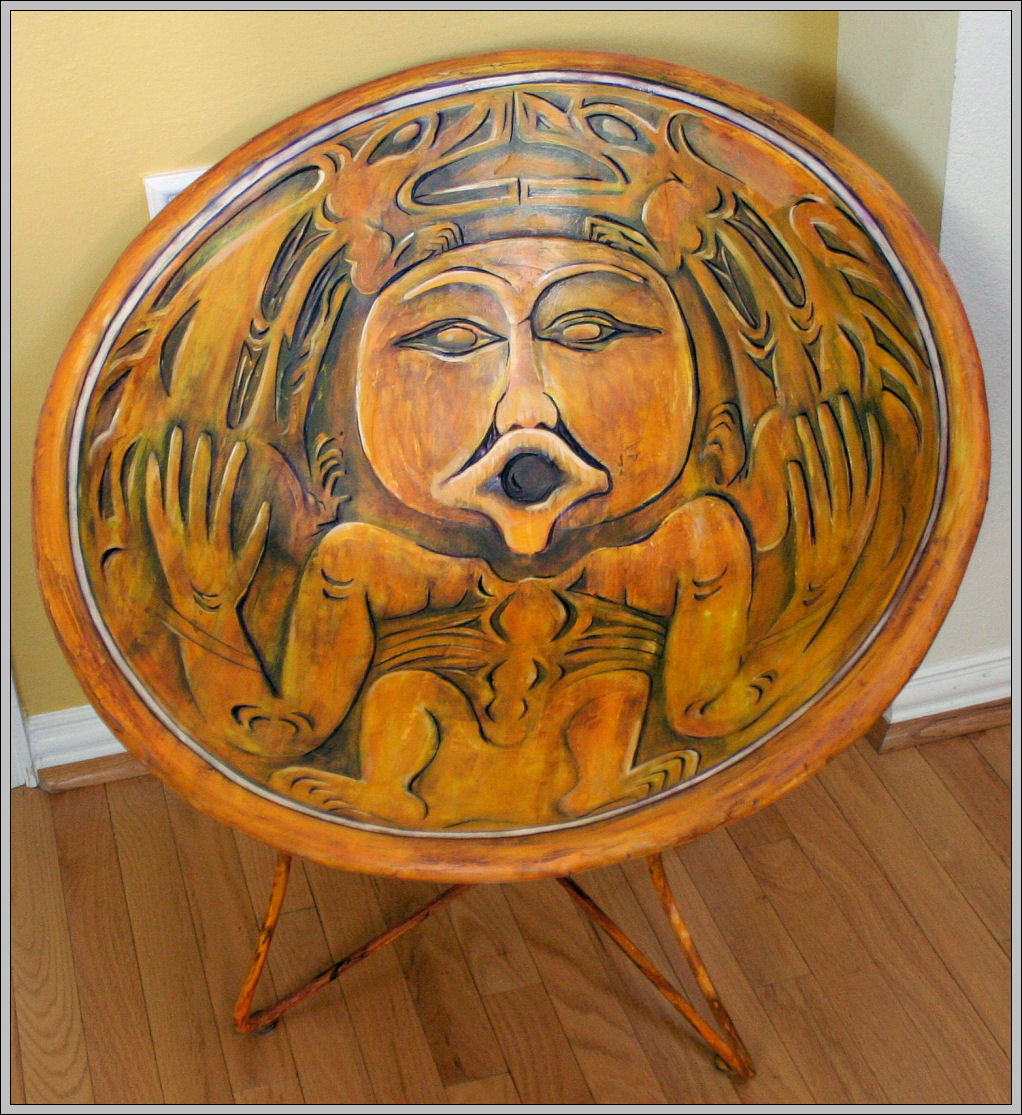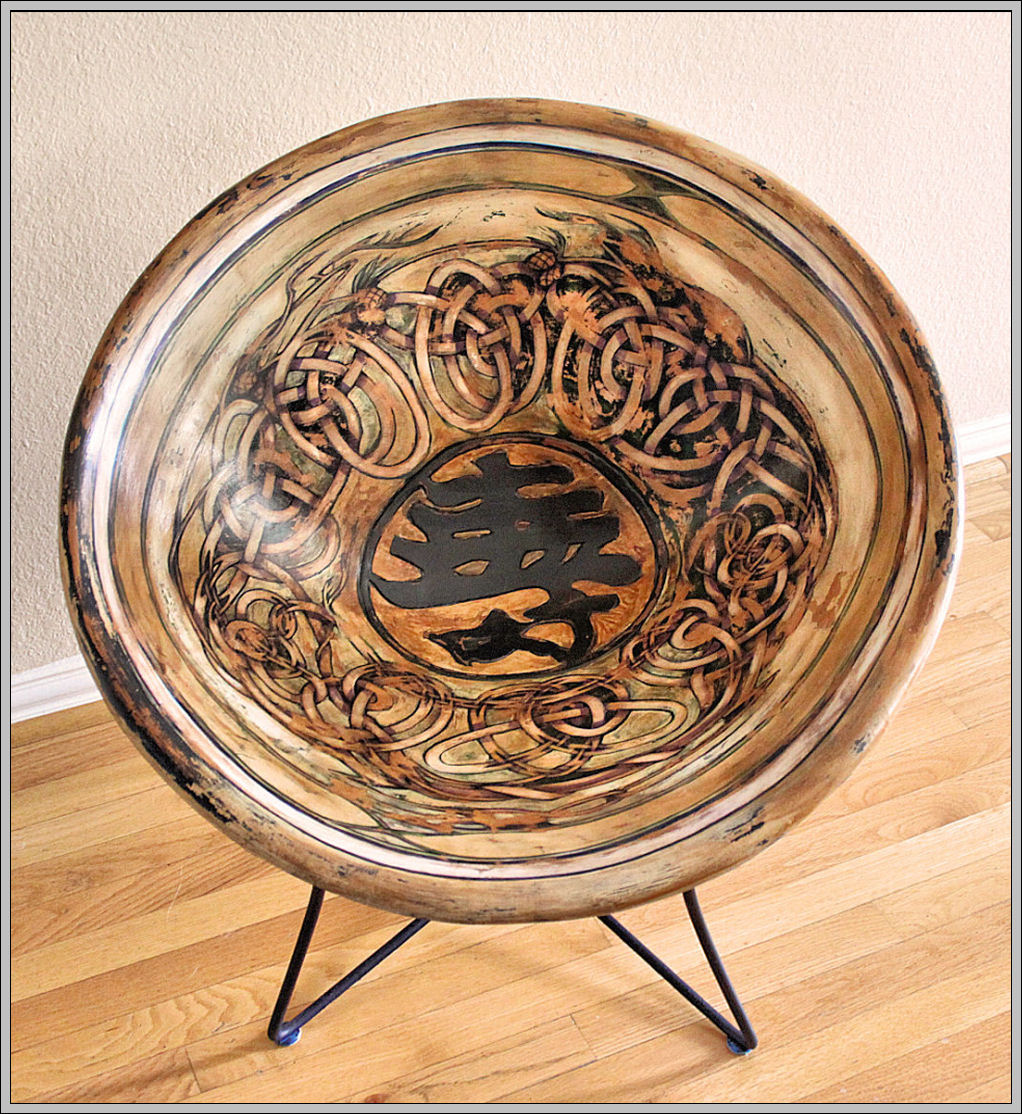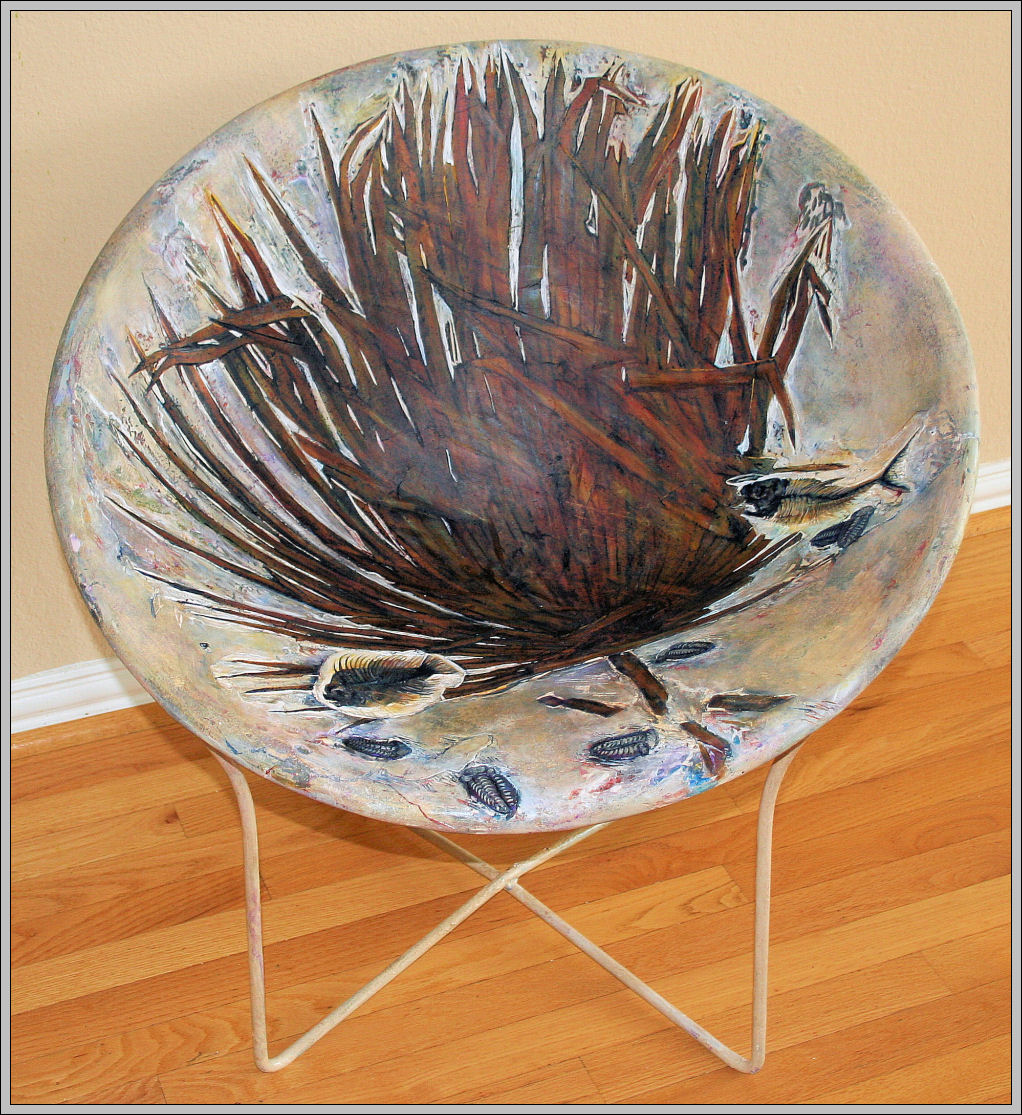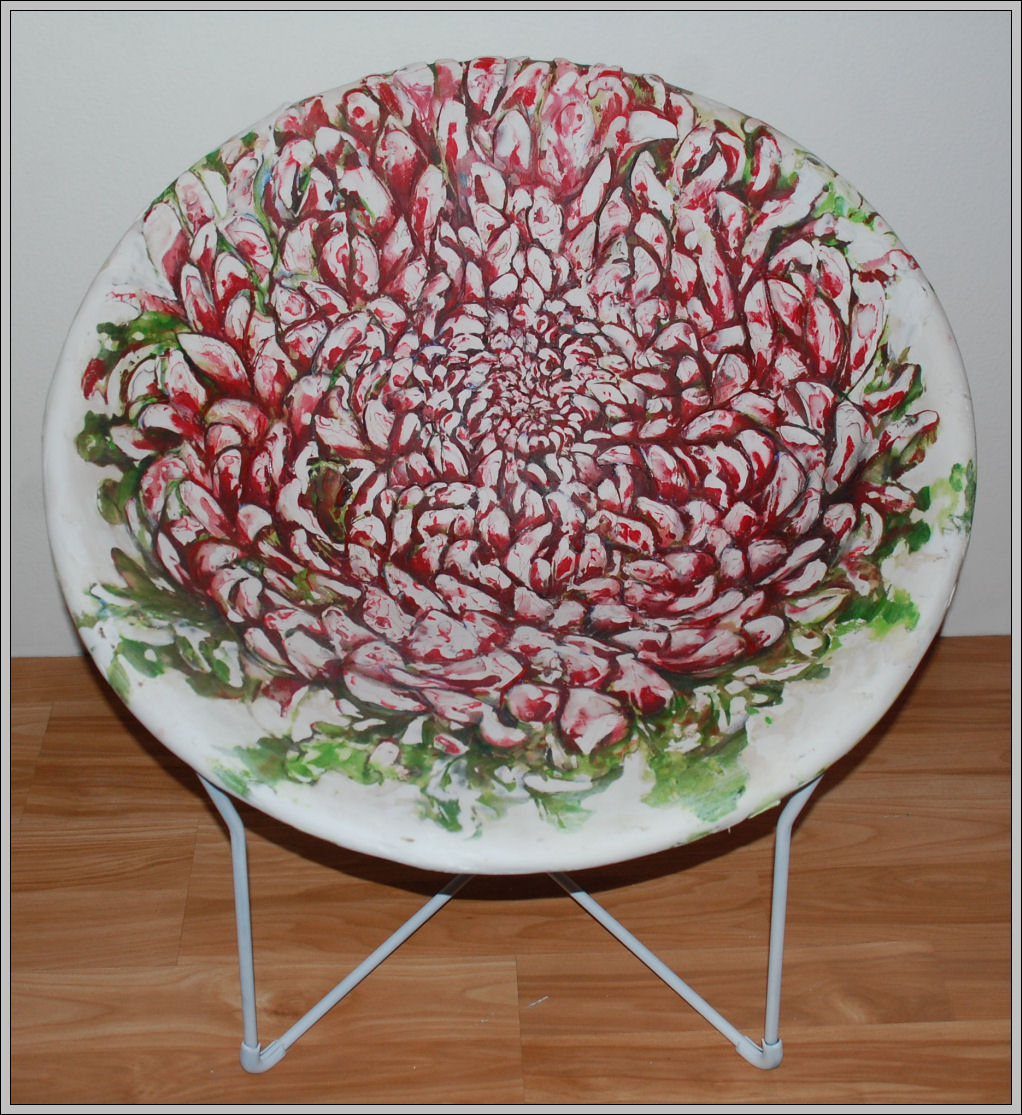Chairs: Art on Art
29H x 29W x 29D inches up-cycled vintage chair base, woven canvas strips, layers of plaster gradually cured, sanded and sometimes carved. Painted with acrylics, varnish, and waxed to enhance colors. Functional art, comfortable, durable.
Marcel Duchamp (1887 – 1968) coined the term “Ready-mades” by exhibiting ordinary objects as art forms. Though he might have preferred that we be appalled by his signing of ordinary unattractive products like the urinal or a bicycle tire, we end up reconsidering the beauty of Design. His generation of artists advocated the obscure notion of “Art imitating Life”. The entire process of creating these chairs – rather, re-creating – pays tribute to all Art and artifacts ever created. The chair designs were chosen over a period of extensive research and a life-long fascination with art history, prehistoric cultures, and the objects they made.
Each chair utilizes the 29H x 29W x 29D inch structure of discarded vintage plastic lawn chairs. They were purchased at a second-hand store before realizing their value as original “Solaire chairs” designed by a French Canadian team, Fabiano and Panzini. They were completely unfashionable during the 1990’s, but I remembered their intriguing design as lawn furniture back in the early 1970’s, and how comfortable they were. A nostalgic idea to refurbish them came to mind, half-thinking that they could be thrown away if I couldn’t figure out a way to re-salvage them.
Two were non-functional with cracked plastic and large gaps. like a lot of artwork, the finished products did not materialize for many years. About ten years would pass before having enough time to start projects that were not work-orders. Two more chairs were purchased after moving to Texas, where despite my husband’s protests, I insisted on moving the first two along with the rest of our belongings. The downside about the design of these chairs is that they can’t be stacked, they take up a good deal of space, and are awkward to carry. However, items like this, with so much potential, are worth every inconvenience!
After weaving strips of canvas across the damaged areas and layering more of the fabric with white glue in a paper mache fashion, thin layers of plaster were gradually applied, allowed time to cure, then sanded in between coats. Each chair design is finalized as sketches on paper then drawn freehand on the dried plaster surface with graphite and/or marker then painted with acrylics. 3 out of 4 chairs involve some carving, with successive chairs each more elaborate than the one before. All are finished with coats of varnish and an application of wax for durability and to enrich the colors. As key pieces in the the Dancing With Trees Art Exhibition collection, the first four chairs relay fairly abstract concepts regarding the importance of trees, particularly with reference to myths, legends, other historic aspects, and cultural significance. The chairs are truly one-of-a-kind, completely functional, and are the ideal place to portray historic art themes and ancient artifacts.
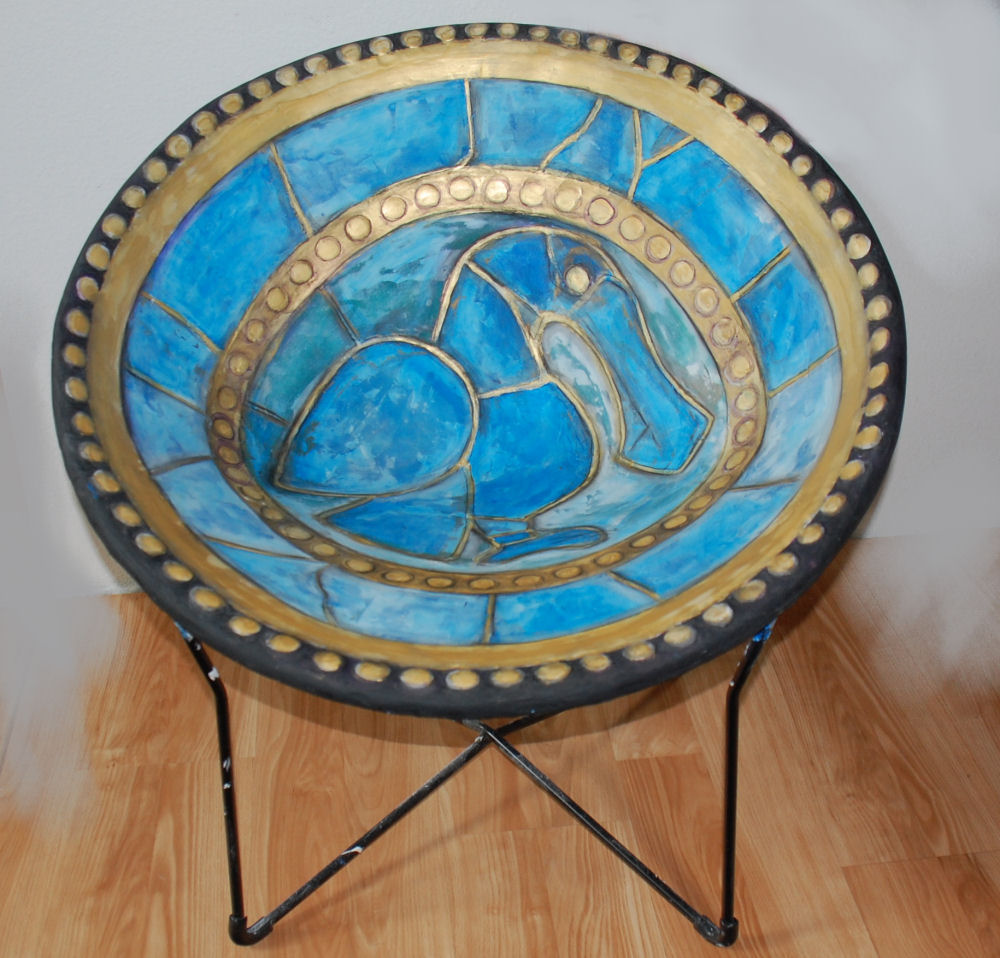 In addition to the five finished chairs listed here, three more are in progress. One is a large replica of a Peruvian Moche culture turquoise and gold earring/ear plug. The second interprets a favorite iconic Hindu culture sculpture, the very graceful Lord of the Dance, Shiva as Nataraj.
In addition to the five finished chairs listed here, three more are in progress. One is a large replica of a Peruvian Moche culture turquoise and gold earring/ear plug. The second interprets a favorite iconic Hindu culture sculpture, the very graceful Lord of the Dance, Shiva as Nataraj.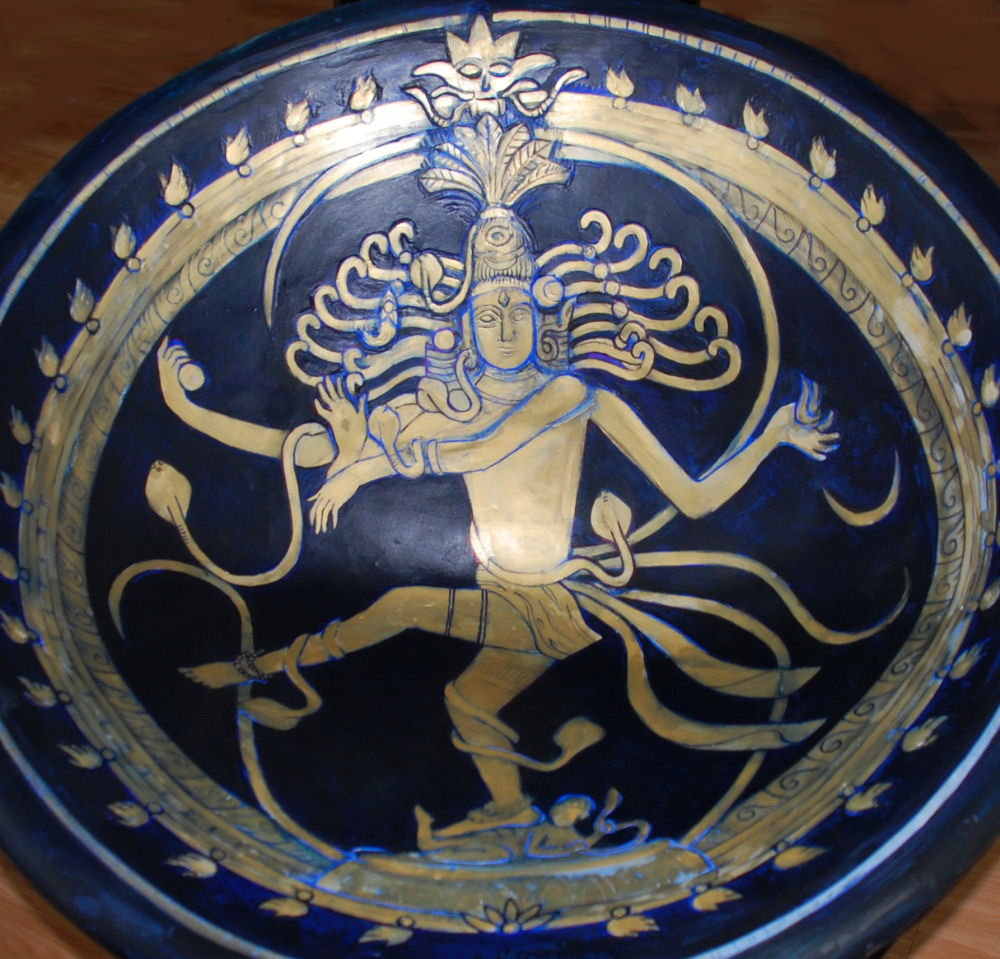 An article of all seven, with images and details of their process, is posted under ‘Furniture’. The third chair has been going through various transformations, first with a Zen Garden theme which changed to a Bigleaf Maple leaf over pebble. It is still going through transformations at this point, so plans are to create a large, beautiful orange lily …we will see what happens! The chairs all need curing time, so while one is worked on the others dry.
An article of all seven, with images and details of their process, is posted under ‘Furniture’. The third chair has been going through various transformations, first with a Zen Garden theme which changed to a Bigleaf Maple leaf over pebble. It is still going through transformations at this point, so plans are to create a large, beautiful orange lily …we will see what happens! The chairs all need curing time, so while one is worked on the others dry.
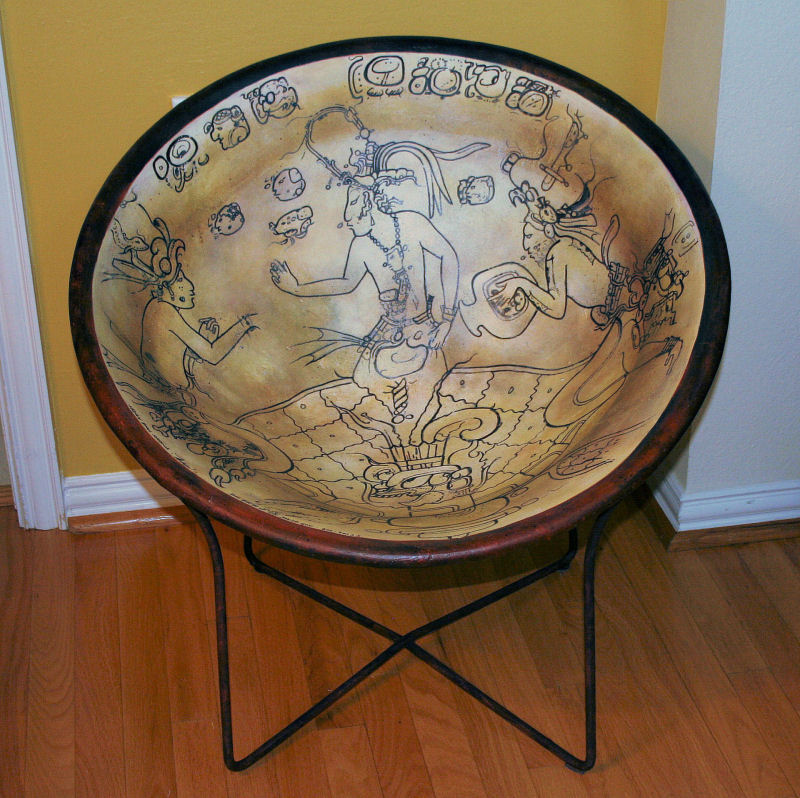 |
||
| Ancient Mayan Bowl Replica, Birth of the Maize God | ||
| $2,000.00 |
The Mayan Bowl Replica Chair: The Birth of the Maize God
Mayan society was based on an intricate system of faith in a multitude of Gods. It was expected that perfect growing conditions for crops would be granted in exchange for human sacrifice. There is speculation that cultural decline is attributed to a string of self-inflicted and circumstantial environmental catastrophes. The loss of forests due to over-extended usage, weather, floods, volcanic eruptions and other natural phenomena, and the resulting deterioration of habitats caused and a loss of the faith, population displacements, decline and eventual extinction.
Great civilizations have come and gone. This chair is included in the Dancing With Trees collection with the statement that as modern society consumes, enjoys and depends upon Earth’s resources, we are as vulnerable to the very same consequences for our actions, and a flux of unpredictable cosmic events. Rather than spreading fear about predictions for our future, we only ought to heed the facts and reevaluate the purpose of our activities as one civilized planet.
The original Mayan bowl’s design dates back to the Late Classic Period of Mayan history, 600 – 900 A.D. Common Era. The central portion portrays two Water Gods witnessing the birth of the omnipotent Maize God who emerges from a turtle, symbol of the earth, all floating in the “primordial soup”. Customarily, hieroglyphs written along the top rim reveal the owner’s name and what the bowl was used for.
Inspirational resource: Maya, Divine Kings of the Rainforest edited by Nikolai Grube ISBN 3-8290-4150
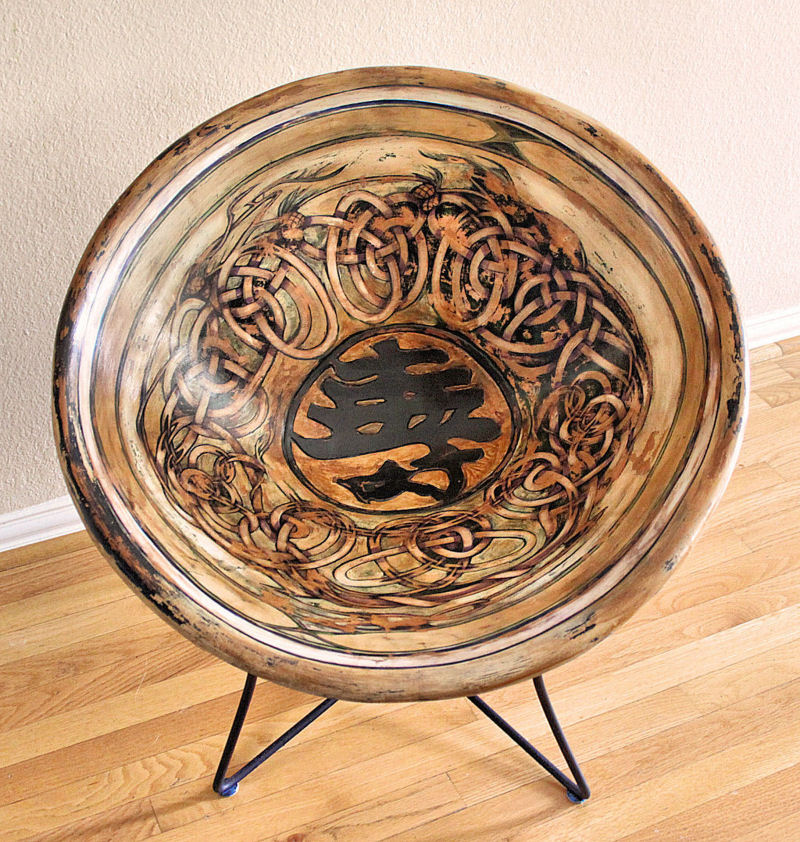 |
||
| The Tree of Life Chair - our spiritual connections with trees | ||
| $2,000.00 |
The design on the Tree of Life Chair incorporates a few ancient, cross-cultural esoteric symbols for beliefs that still hold meaning for many of us today. The Tree of Life, a widespread mythical idea with branches and roots representing, among other things, the philosophy of “As above, So below”. Symbolic of longevity, and central to the design is the Japanese character Shou, very much resembling, and possibly originating from the shape of a tree. Stylized branches, roots and cones of the Pine, also symbolic of longevity in Japan, are interwoven in the classic Celtic style. I was also inspired by the ornate work of illuminated gospel manuscripts in “The Book of Kells”, illustrated by Irish monks around the year 800 A.D., Common Era.
Snakes are well-known as having similar religious or mystical connotations in many cultures, and two resemblances are drawn around the circumference of the chair in a familiar Yin-Yang placement. Australian Indigenous legends regard the Rainbow Snake as the most important sacred symbol; believed to be the creator of all things. Christian biblical literature advocates that the snake that offers the apple from the Tree of Knowledge to Eve. There are subtler symbolic references here as well, starting with the overall circular shape of the chair itself, and the repetition echoing within. The circle is another universal symbol, a common shape seen in nature and nature’s effects, suggesting Life’s recurring cycles, unending unity and a sense of completeness.
I played with various color combinations, painting the Celtic design over and over, also carving it out in areas and trying to make it look like ivory inlay, until finally deciding it looked best as aged Sienna colored wood. I felt the carving outline wasn’t suitable, so drywall compound was reapplied, it dried, was redrawn and repainted. Colors from those previous layers add to the depth of the antique finish.
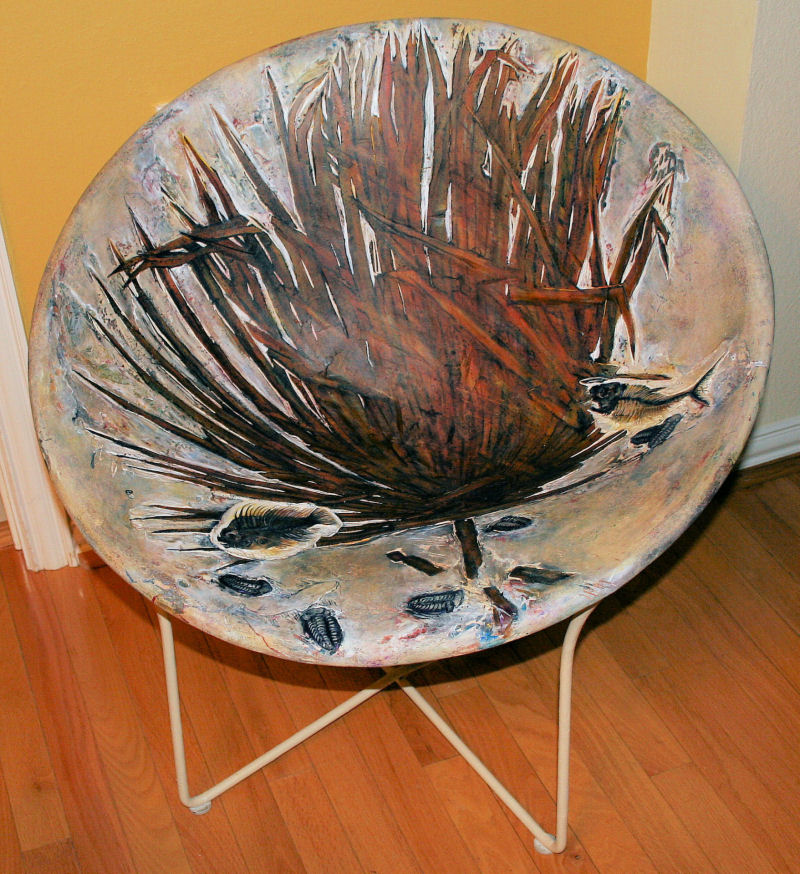 |
||
| Cycad Leaf Fossil Chair, Homage to the history of Earth | ||
| Partially carved, has extinct Myalina fossils embedded in back | ||
| $2,200.00 |
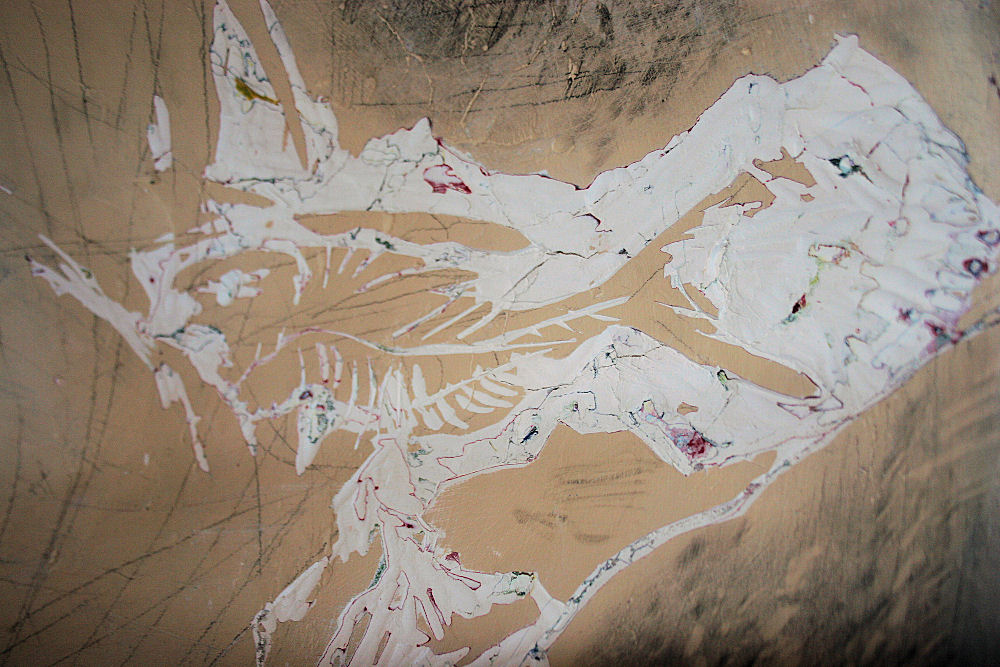 |
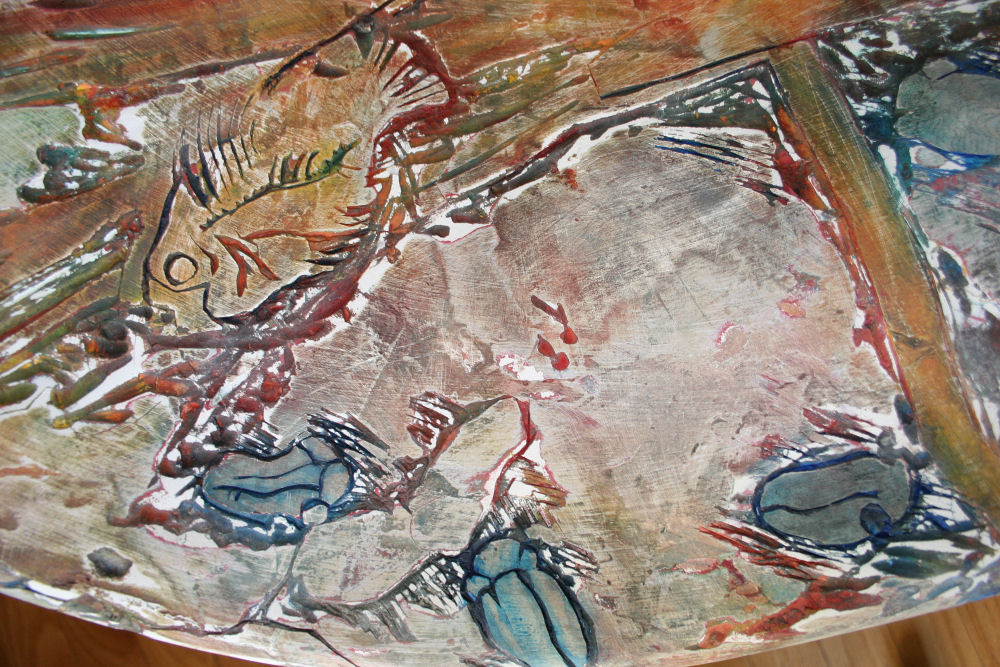 |
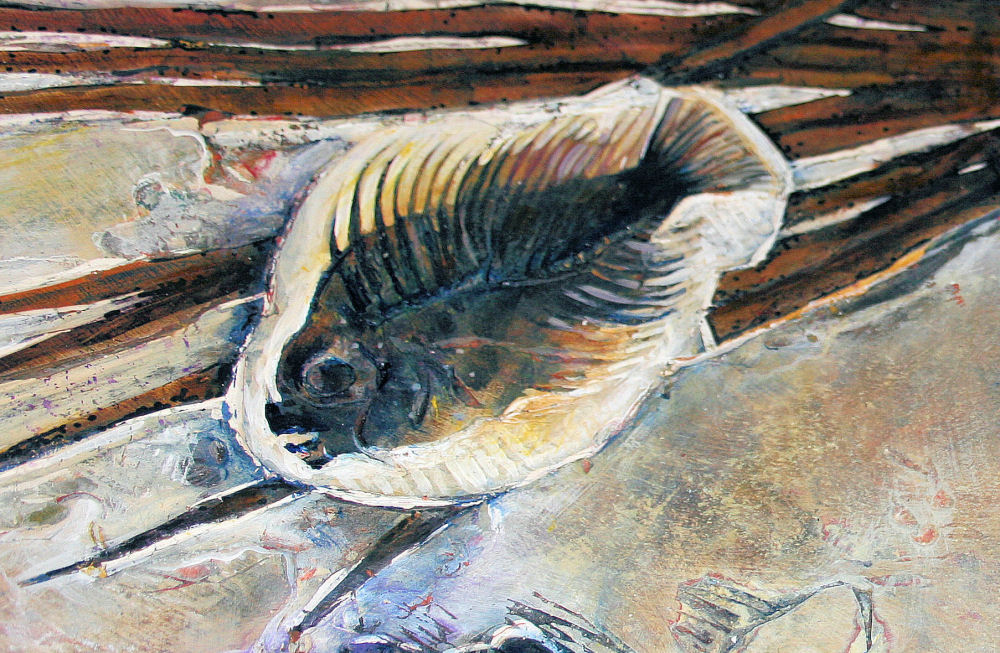 |
|
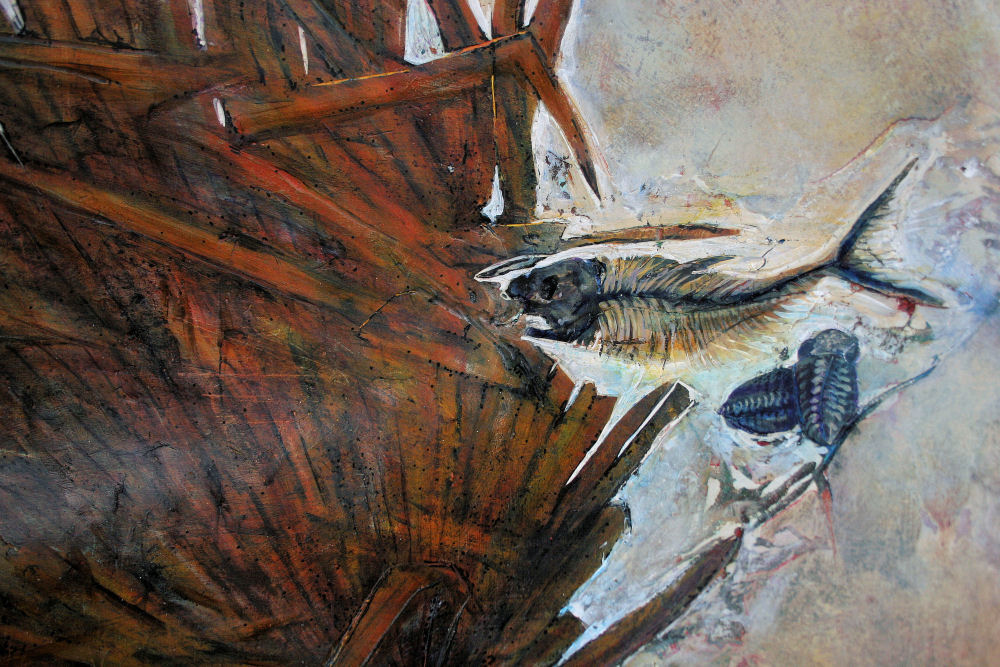 |
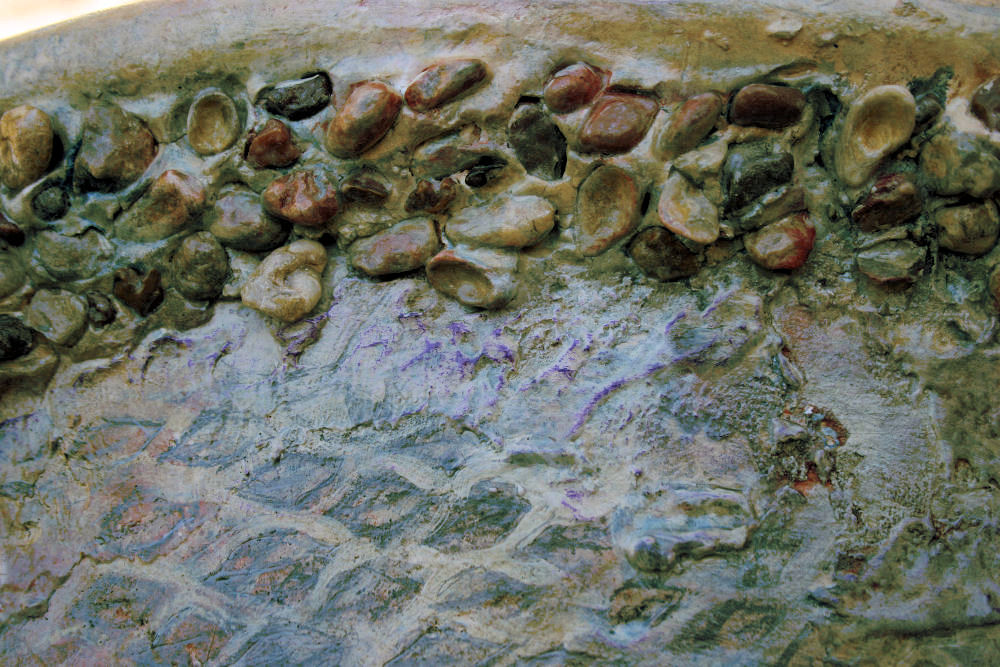 |
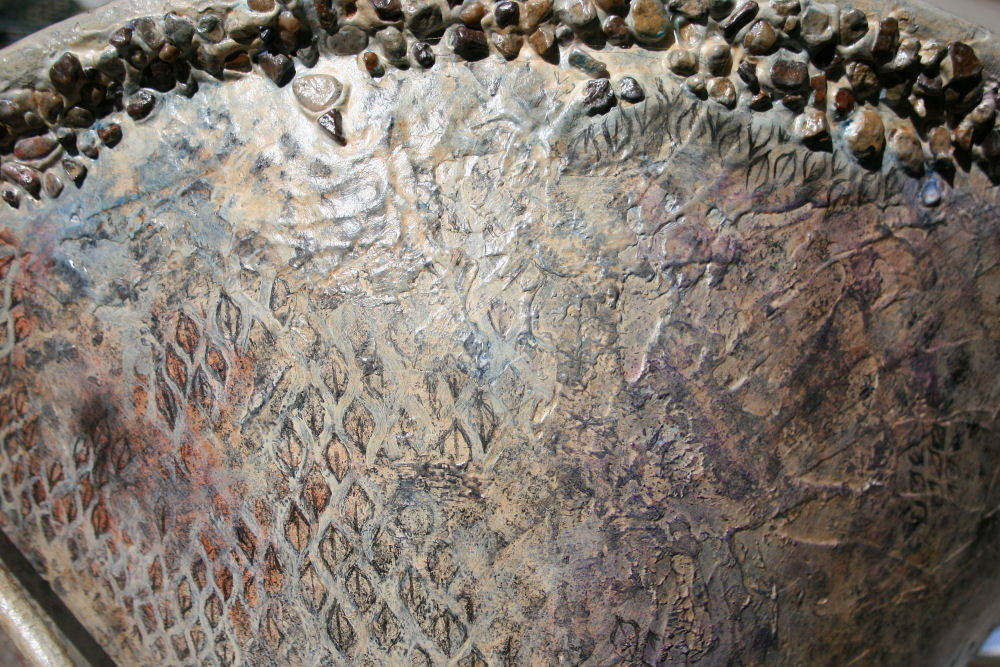 |
|
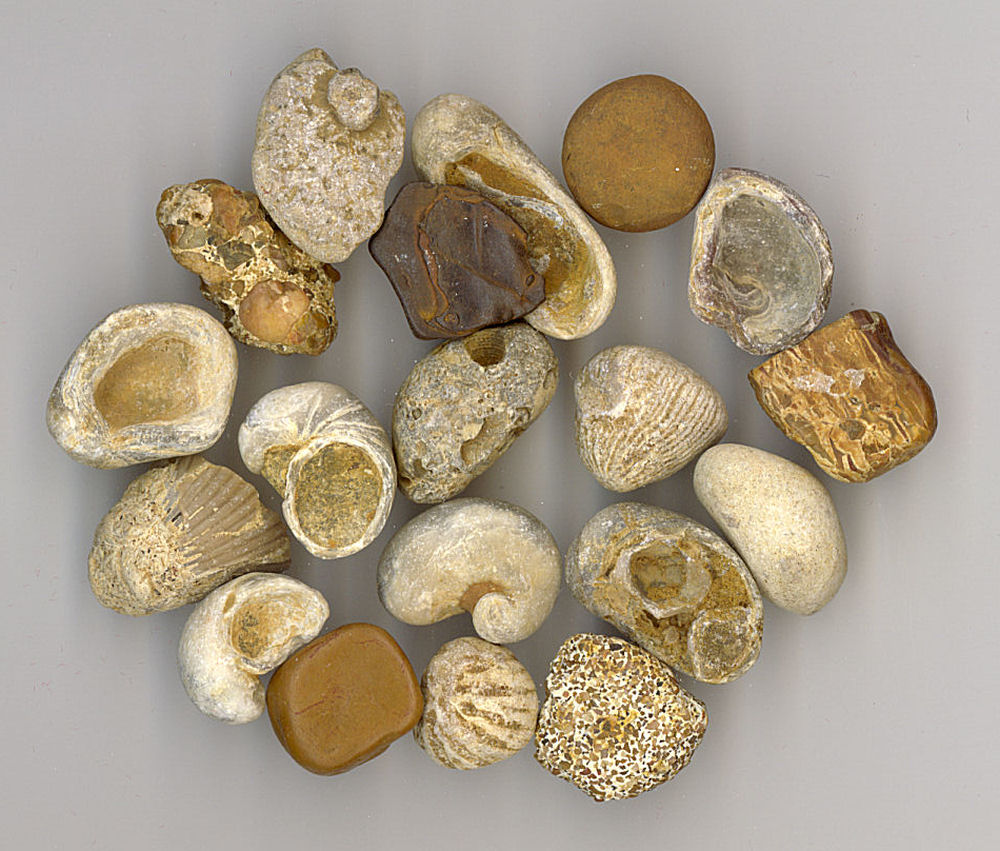 |
The Cycad Leaf Fossil Chair is thicker and heavier than most of the chairs, with extensive carving details emphasizing its unique character. The front of the chair is a rendition of the fossil of a Cycad leaf from the first species of palm-like trees that grew about 50 million years ago. The original Cycad leaf fossil was discovered in a Wyoming riverbed.
The circumference on the back of this chair has an informal mosaic embedded with authentic fossils of an extinct clam and pebbles. The extinct genus of shells called Myalina are estimated to be 345 – 225 – million years old, and were found in a playground in the Dallas, Texas area.
Completing the back of the chair, the surface is textured along with patterns of the bark and leaf scars of a fossilized Paleozoic Lepidodendron. The first trees on Earth were actually leafless; nothing more than woody stems standing in and absorbing nutrients from water. Lepidodendron were a primitive species of the very first trees on earth, reaching heights of 130 feet (40 m) tall, with leaves that grew flat directly along the bark around 400 million years ago.
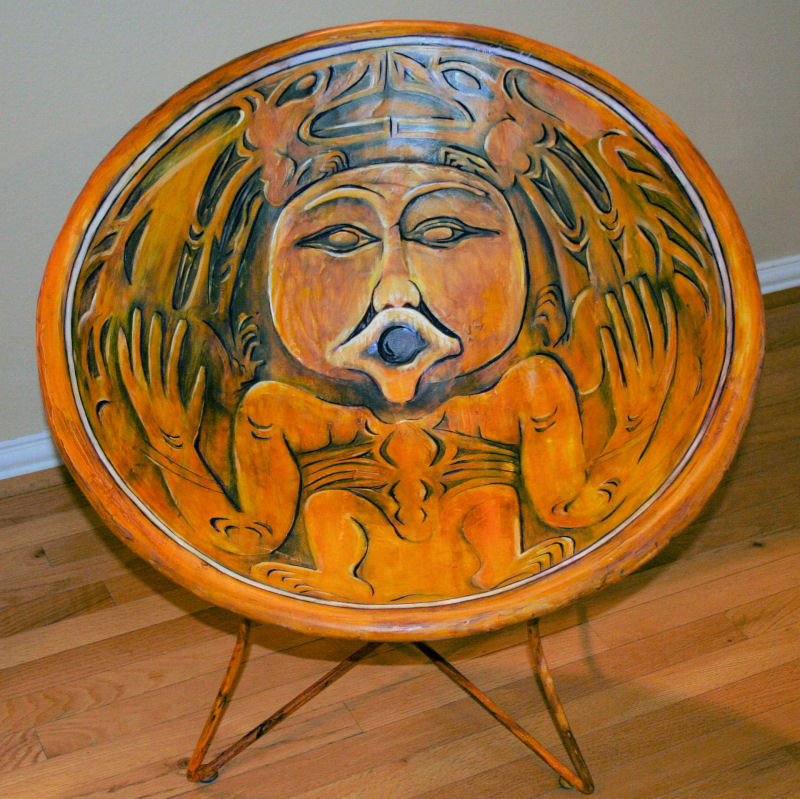 |
||
| Salish (Pacific Northwest) Spindle Wooden Whorl Replica chair - Vintage 1960s Chair and mixed media, finished 29 x 29 x 29 inches | ||
| $2,000.00 |
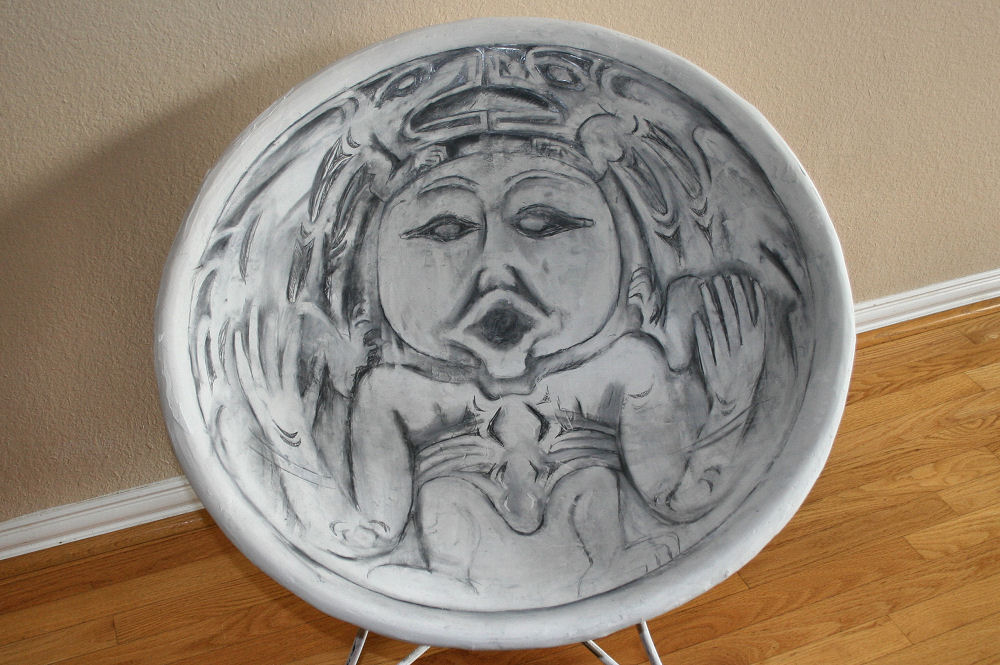 |
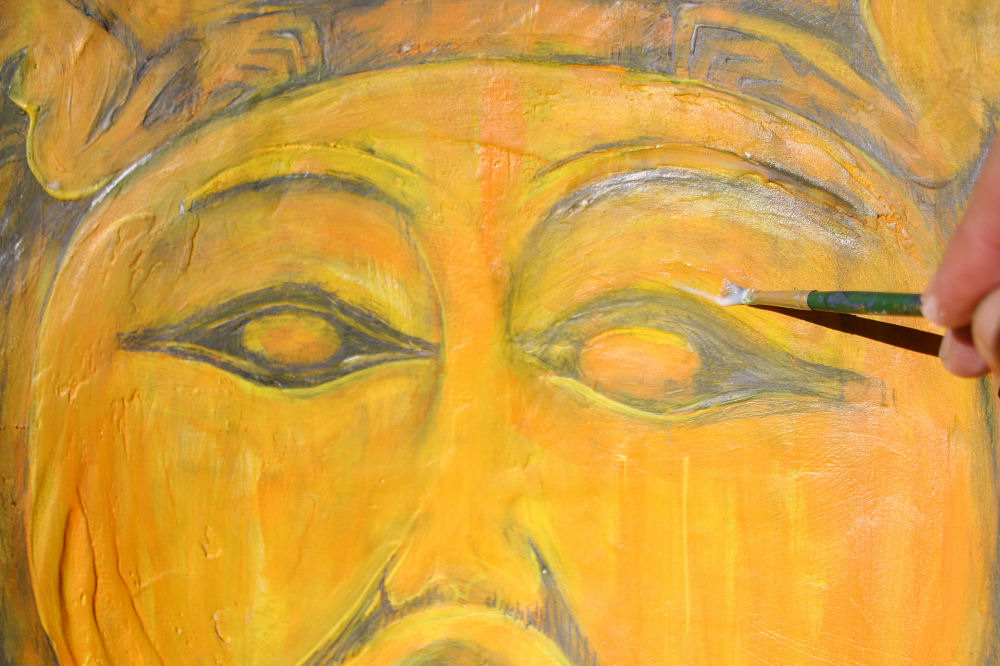 |
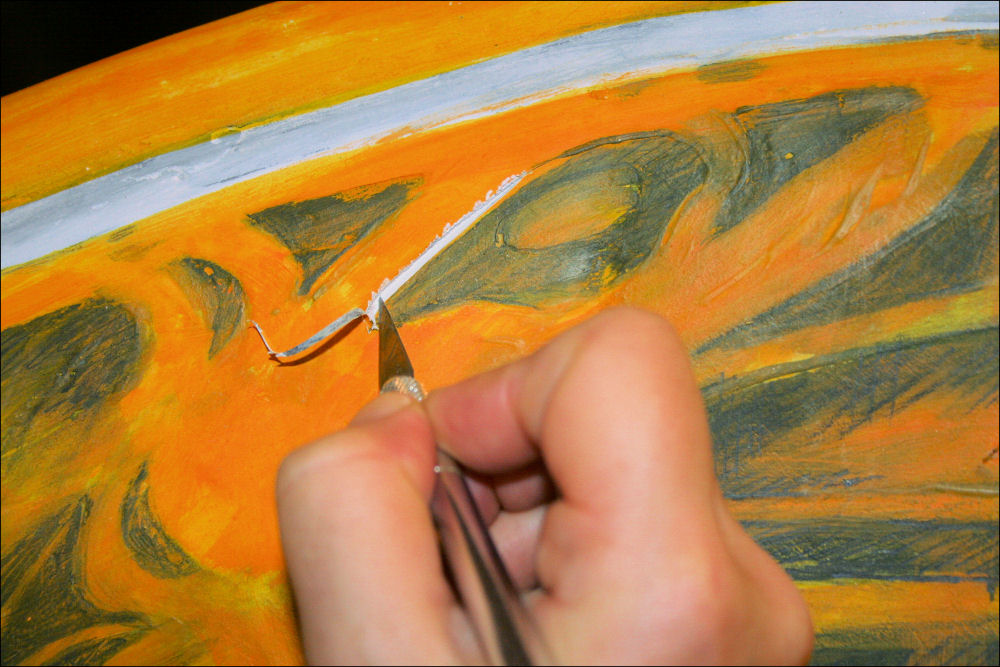 |
|
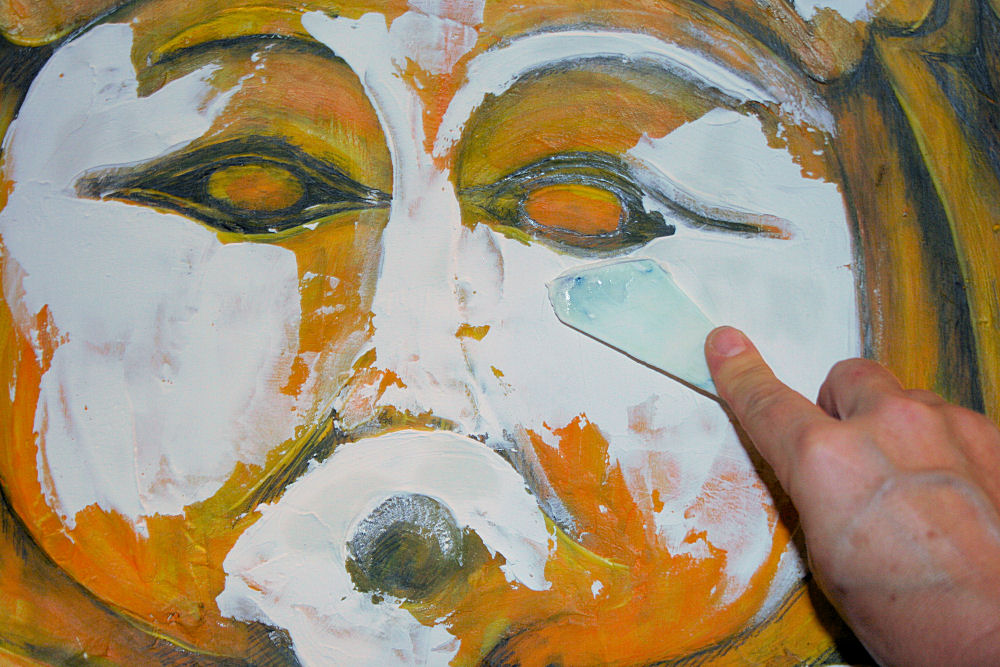 |
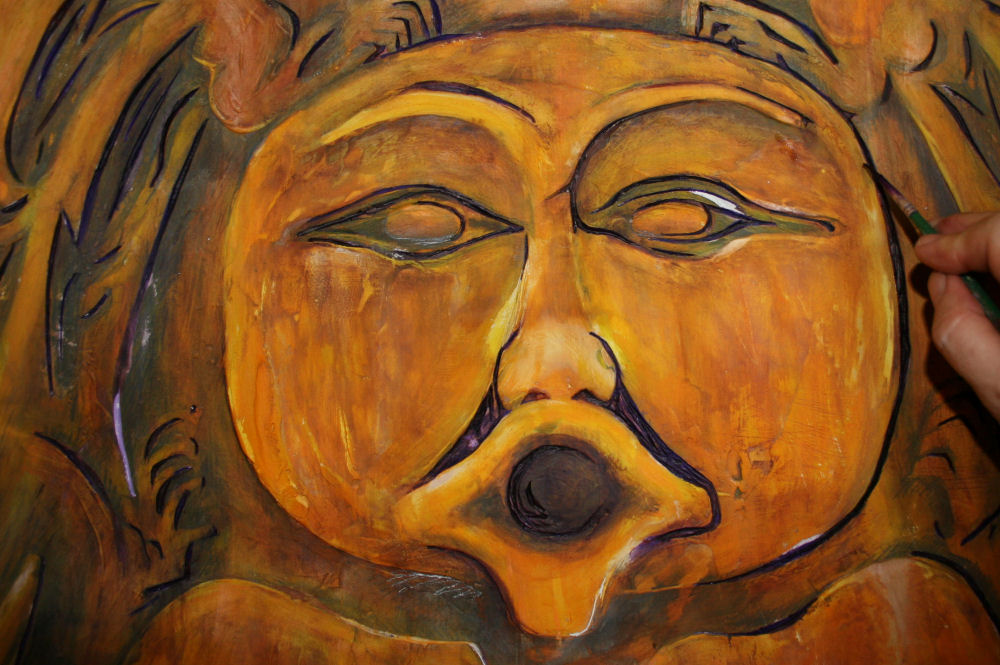 |
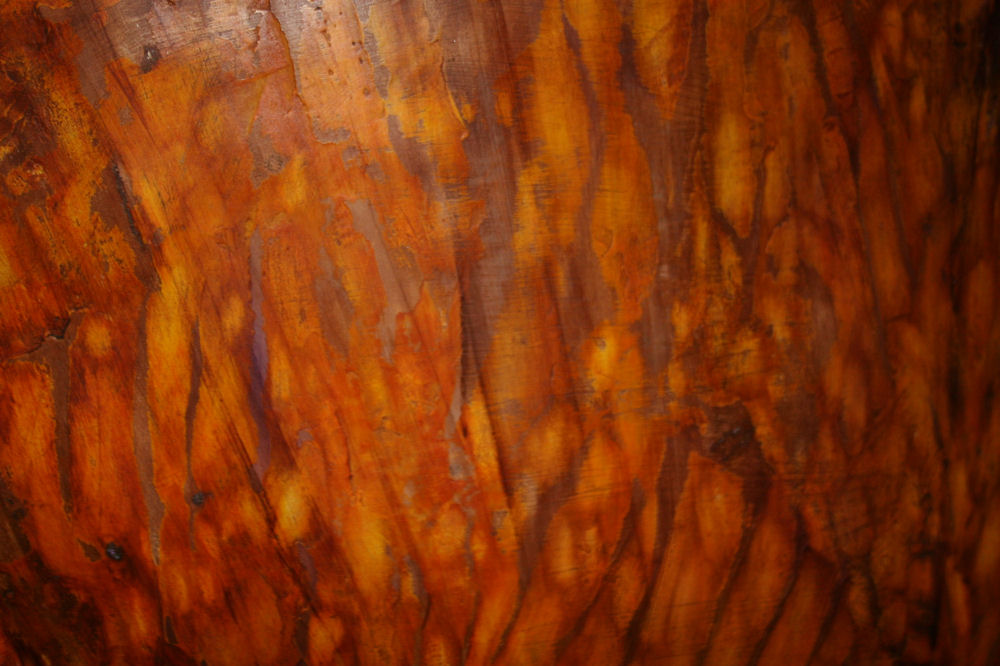 |
The Salish Spindle-Whorl Replica Chair
Cultures across the world throughout time have used trees and their byproducts for homes, clothing, foods, medicines, transportation, furniture, tools, as aids to construction, and more. We generally still continue with ancient traditions of beautifying utensils and everyday objects with designs that correlate to the use thereof, or simply to be aesthetically pleasing.
A whorl is the base on which a spindle twirls as it receives the yarn as it’s created. Spinning yarn and weaving fabric comprise some of our oldest known technology. The design carved on the original wooden whorl shows a central human figure holding two otters, animals that are still prevalent and adored in that area. It was found near Vancouver Island, Canada, believed to have been used by the early indigenous Salish women while spinning yarn for blankets and clothing. It’s notable that fabric was also created by chewing and refining the fibers of bark sectioned from Cedar trees.
Also native to Vancouver Island territory, a Kwakiutl prayer to a Cedar tree reads: “Look at me friend! I come to ask you for your dress, since there is nothing you cannot be used for. I come to beg you for this, Long-life maker”.
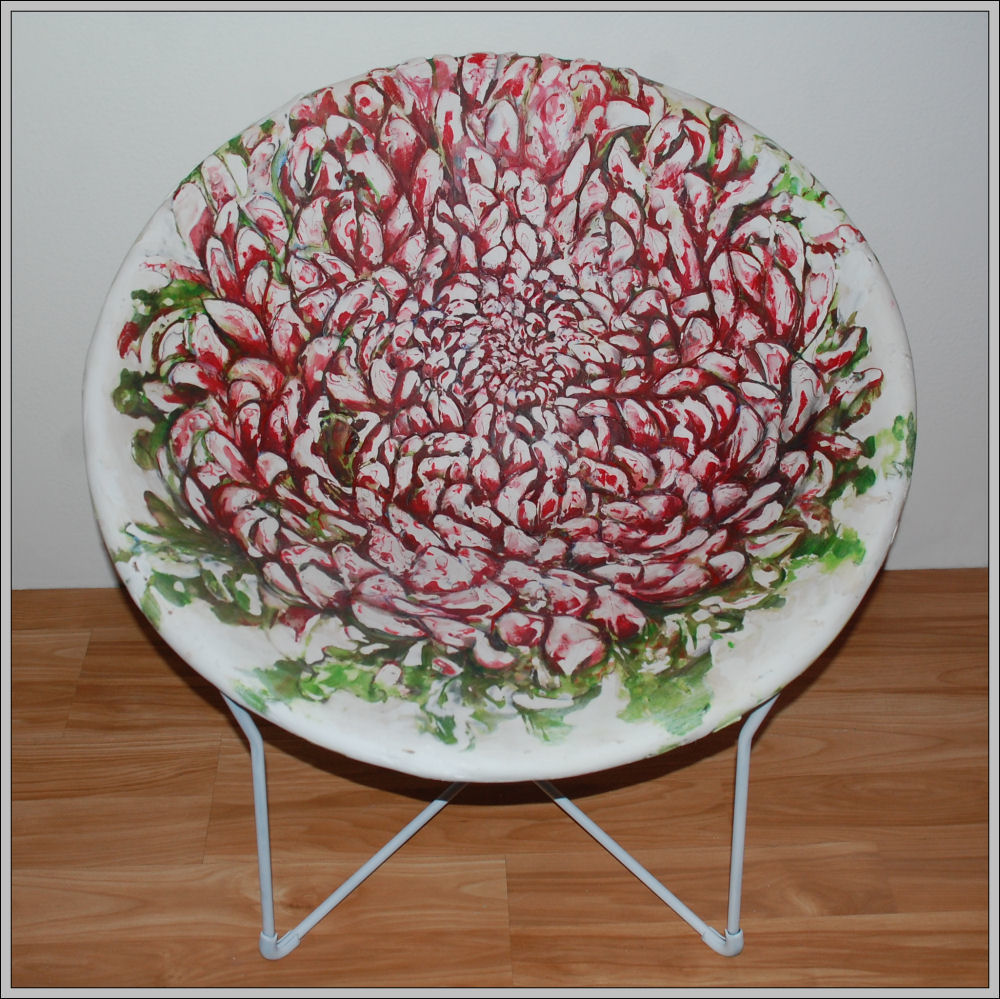 |
||
| Chrysanthemums Chair, entire surface carved, back and front. | ||
| $2,200.00 | |
|
Symbolism and Significance of Chrysanthemums
With a history that dates back to 15th century B.C., first cultivated in China, where it is symbolic of honesty. In Egypt, Tutankhamen was reportedly buried with chrysanthemums. The plant is thought to have been introduced in Japan by Buddhist monks around the fifth century. Initially forbidden to grow except by nobility, the chrysanthemum is now a showy garden perennial common in gardens the world over, in a vast array of cultivars, shapes and sizes, with colors ranging in shades of purple, pink, red, white, yellows and greens.
In terms of design, the mandala formation demonstrates unfurling petals spiraling outward in succession from the center, like fireworks. is easy to see why chrysanthemums symbolize optimism and joy. Certain species of the plants are edible and contain medicinal properties. Leaves and roots can be cooked, used mainly in Asian dishes, and flower petals are boiled to make tea. Extracts of the plant, pyrethrins, are processed and preferred as an earth-friendly, biodegradable commercial insecticide. The floral industry thrives on the notion that every flower has unique characteristics. For example, the chrysanthemum is the November birth flower and also appointed to the 13th wedding anniversary.


